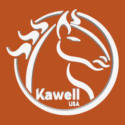Born and raised in Sweden, Conny Svensson also learned Standardbred shoeing there (where it is more popular among the population that in the United States). He then came to the states in the early 90s and developed his farrier practice. Today, he only shoes for one Standardbred client, Hall of Fame trainer Jimmy Takter (a fellow Swede transplant).
Here are some observations he has about his having learned shoeing in Sweden and some of the Scandinavian influence on Standardbred shoeing. Svensson sees it as an equal trade of ideas — better practices from each country eventually make it into the common practice over the Atlantic.
Trimming with a flat blade knife with a rawhide mallet. Old habits die hard. Svensson still uses a mallet and knife to trim from time to time. Although he may not use this combo on every horse, Svensson tends to use it every day. He uses it to clean up hard, dry soles. Another situation in which he uses it is it to lower the heels in situation when too much rasping makes it impractical, and the nipper lacks the precision. He prefers using his nippers, rasp and hoof knife.
When he came to the United States from Sweden, Svensson primarily used a mallet and flat blade to trim Standardbred. However, someone stole these tools, and he made the switch to the more common usage of nippers.
“If I ever catch that person who stole my knife, I’d like to take them to dinner,” laughs Svensson. “I find the nippers are so much more practical than the hard labor.”
This exact style is widespread use in Scandinavia. “It isn’t something that they teach back home anymore,” he says. “They use nippers like we do."
Running a horse barefoot. “The great majority of horses today run barefoot in Sweden,” says Svensson. He adds that the surface material that the horses race on is much finer and softer than the surfaces at Standardbred tracks here.

Here, horses are typically trained in shoes and then the shoes are pulled at the race. It is a much rarer use here. Svensson says the horses have to have feet in great shape to pull it off here.
“I worked on a horse the other day that had come from Norway,” he says. “It hadn’t raced in shoes in 2 and a half years. But the owner looked at the track at the Meadowlands and realized there was no way it could be barefoot here, so we put shoe on it.”
Flip Flop Pads. When Svensson came to the United States, he saw seldom use of flip flop pads ion the Standardbred tracks. It is very common today.
“I think it started with a really good horse wearing them years ago,” he says. “It opened up eyes and now they are very popular.”
He says it is the same with pre-made aluminum shoe varieties — they wide selection of aluminum Standardbred shoes was more used in Scandinavia and elsewhere in Europe.







